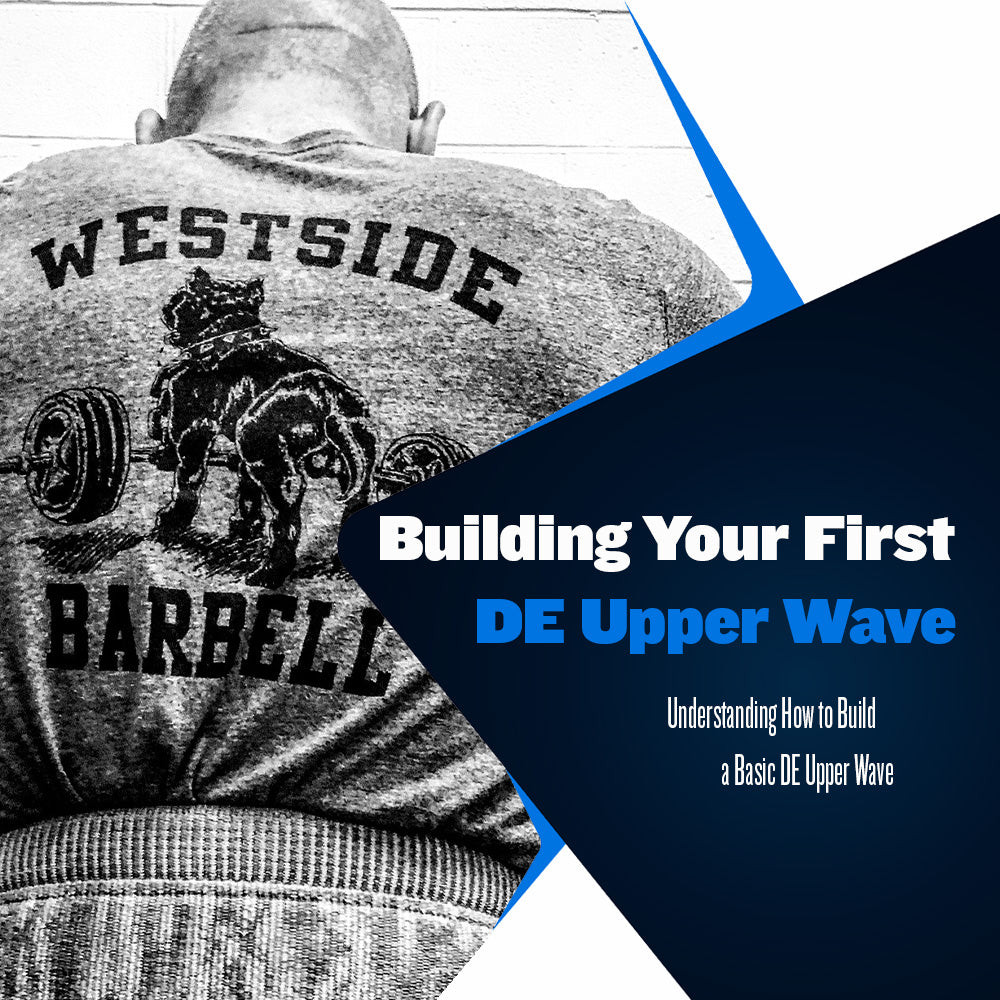Building Your First DE Upper Training Wave

Dynamic effort work is the key to building explosive power, allowing an athlete to increase their rate of force production. This training method couples with max effort training to give us the power we need to make the best use of the absolute strength we are building. To be maximally strong, you must be explosive.
For your dynamic effort upper body training to be effective, it must be appropriately programmed. At Westside, we use three-week training waves to organize our dynamic effort upper and lower training. The idea behind each training wave remains the same, three weeks providing an escalation of intensity and reduction in volume, then moving on to the following three-week wave.
Putting together dynamic effort training can sound complicated when truthfully, it is relatively easy. Here is how we recommend putting together your first dynamic effort training wave.
Finding Your Working Weights
At Westside, we use percentage-based training, and our dynamic effort work is programmed accordingly. Here is the recommended three-week wave intensity escalation for beginners training dynamic effort upper:
Week 1 - 45% bar weight + 25% band weight
Week 2 - 50% bar weight + 25% band weight
Week 3 - 55% bar weight + 25% band weight
As you can see, over three weeks, the intensity has escalated. However, note that we do not alter the band weight, only the bar weight changes. For most benchers, a set of minibands will be appropriate; if you lack the strength to train with minibands, use microbands.
Your First Wave
If you are new to dynamic effort upper training, it is recommended to keep things simple at the start. Your first wave will utilize a standard power bar, plates, and minibands. You want to focus most on the execution of your lifts, ensuring that you are training with the proper intent to get the most out of dynamic effort training.
Here is what the first wave should look like for someone who benches 300lbs and is new to dynamic effort upper training:
Week 1 - 135lbs + 75lbs (miniband) 12 x 3
Week 2 - 150lbs + 75lbs (miniband) 10 x 3
Week 3 - 165lbs + 75lbs (miniband) 8 x 3
If the overall volume is difficult to manage at first, you can subtract two sets each week. Reps will always remain the same.
Accessory Training
Now that you have your main exercises figured out, the next step is to decide the accessory exercises you will utilize throughout the three-week wave. You should always perform at least four accessory exercises for upper body training days, up to six exercises if your conditioning allows for it.
Here is an example of a properly written accessory exercise plan for your first week:
Push Press - 4 x 5-8
Barbell Rows - 3 x 8-10
Rolling DB Tricep Extensions - 4 x 12-15
Hammer Curls - 4 x 10-12
Tricep Rope Pressdowns - 3 x 15
Standing Lateral Raises - 3 x 15
Each week should feature some new exercises. However, this list shows the types of exercises we select and the order we perform them in. Choose exercises that address weak or lagging muscle groups.
Future Main Exercise Working Weights
In the future, you will likely hit a bench press PR and then have a new number to figure out your dynamic effort working weight. If this happens in the middle of a wave, you will always want to finish the rest of the wave using the weights you would’ve used before the newly established PR.
Once you are through that wave, you can begin utilizing the new PR number to figure out your dynamic effort working weight. You may end up finding that even though you made a new PR, your dynamic work isn’t as explosive as it should be with the new working weights.
If this is the case, revert back to using the former working weights you were able to perform to standard. It does no good for an athlete to train their dynamic effort work with a weight they cannot move with the proper velocity
For more information regarding dynamic effort training, visit the Westside Barbell blog.




